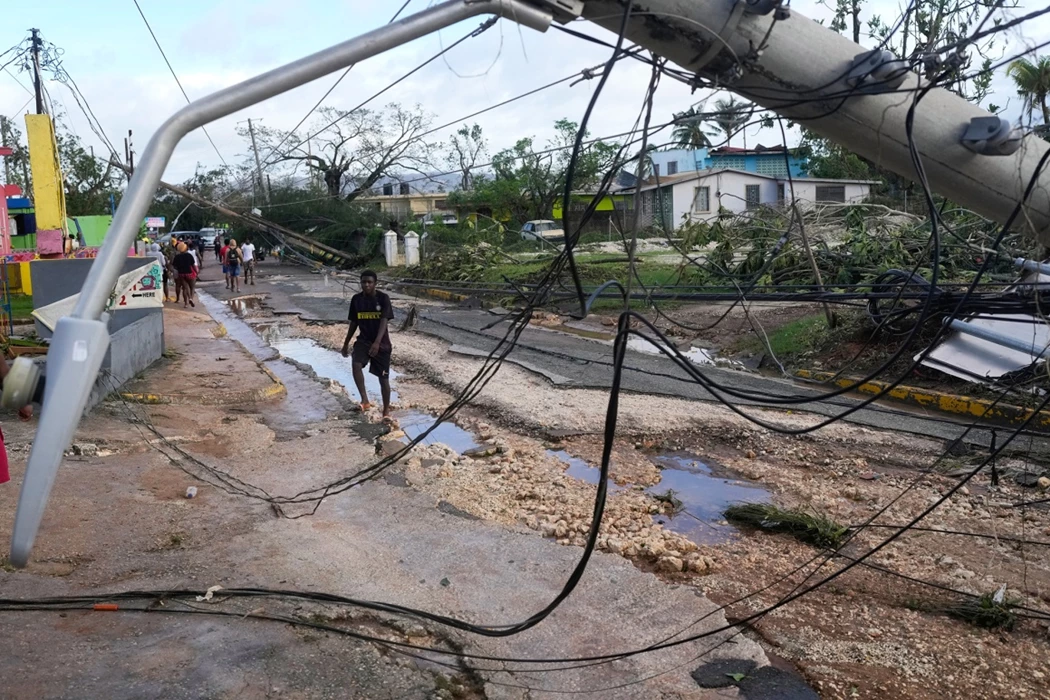Jamaica’s Grid Was Not Ready for Hurricane Melissa
(Bloomberg) -- After Hurricane Beryl devastated Jamaica’s grid last year, officials at the island’s sole utility vowed to fortify it. But the company’s initiatives were only in the planning and early implementation stages when Hurricane Melissa hit as a Category 5 storm on Tuesday, according to research group BloombergNEF.
Officials don’t yet know the full extent of the storm’s damage and it could take days, maybe weeks, to conduct a comprehensive damage survey from the strongest known storm to hit Jamaica. According to early reports, there were blackouts over almost 80% of the country.
“The reports that are coming in are catastrophic,” Daryl Vaz, Jamaica’s Minister of Transport, Telecommunications and Energy, told Sky News Australia in a televised interview on Tuesday. “Not very much survives a Category 5 hurricane in terms of infrastructure.”
Jamaica Public Service Co Ltd, the local utility, did not respond to a request for comment.
The situation in the island underscores the challenges for vulnerable countries to keep up with the quickening pace of climate change. A UN Environmental Programme report released on Wednesday found that funding to blunt the worsening effects of severe weather is slowing down. The agency says poor nations will need between $310 billion to $365 billion in adaptation finance per year by 2035.
After Beryl struck the island as a Category 4 storm, JPS vowed to earmark $108 million in 2025 towards investments aimed “to reduce power disruptions, safeguard infrastructure integrity, and improve our system’s ability to withstand extreme weather events such as hurricanes and tropical storms,” according to its 2024 annual report, published in April.
It’s unclear how much of this money had already been spent by the time Melissa hit Jamaica. But according to Sofia Sandano, a country transition analyst at BloombergNEF, the country's electricity grid is still highly vulnerable to extreme weather despite early efforts to shore it up.
The 2024 hurricane season “reinforced a hard truth: climate change is no longer a distant concern—it is a present and persistent threat,” the company’s chairman Damian Obiglio wrote in the annual report.
As of June, though, the nation’s power system was “built to withstand up to Category 3” hurricane conditions, according to a 2025 “Storm Season” fact sheet published online by JPS. Category 3 storms have maximum wind speeds of up to 129 miles per hour (208 kilometers per hour).
©2025 Bloomberg L.P.





